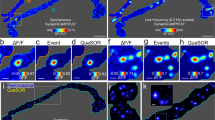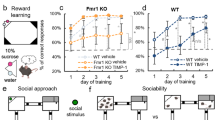Abstract
DAHLBÄCK et al.1 have found that the frequency with which miniature end-plate potentials appear at the neuromuscular junctions is significantly reduced in myasthenia gravis. Since these potentials are assumed to represent the spontaneous release of transmitter substance from motor nerve endings the defect in myasthenia has been considered to be of presynaptic origin. However, agents which help the clinical disorder do not greatly affect the frequency of miniature end-plate potentials, and for this reason it is still necessary to consider possible alternative mechanisms which may operate independently of, or in conjunction with, the defect in the presynaptic release. One possibility is that the transmitter ‘quanta’ fail to cross the synapse because of morphological abnormalities in the latter2. Equally, the end-plate may be resistant to the transmitter substance. Thus a decrease in the frequency of miniature depolarizations might reflect a degree of failure in transmitter diffusion or indicate an abnormality in the responsiveness of the membrane to ionic influx. The first possibility cannot easily be tested, but the second can conveniently be studied by recording the frequencies and amplitudes of post-synaptic events under various test conditions.
This is a preview of subscription content, access via your institution
Access options
Subscribe to this journal
Receive 51 print issues and online access
$199.00 per year
only $3.90 per issue
Buy this article
- Purchase on SpringerLink
- Instant access to full article PDF
Prices may be subject to local taxes which are calculated during checkout
Similar content being viewed by others
References
Dahlbäck, O., Elmqvist, D., Johns, T. R., Radner, S., and Thesieff, S., J. Physiol., 156, 336 (1961).
Coers, D., and Desmedt, J. E., Lancet, ii, 1124 (1958).
Kuffler, S. W., J. Neurophysiol., 8, 113 (1945).
Kuffler, S. W., and Edwards, C., J. Neurophysiol., 21, 586 (1958).
Kahn, A. J., and Sandow, A., Ann. N.Y. Acad. Sci., 62, 139 (1955).
Liley, A. W., J. Physiol., 132, 650 (1956).
Feigen, G. A., Vaughan Williams, E. M., Peterson, J. K., and Nielsen, C. B., Circ. Res., 8, 713 (1960).
Boyd, I. A., and Martin, A. R., J. Physiol., 132, 61 (1956).
del Castillo, J., and Katz, B., J. Physiol., 124, 574 (1954).
MacIntosh, F. C., Fed. Proc., 20, 567 (1961).
Author information
Authors and Affiliations
Rights and permissions
About this article
Cite this article
HOFMANN, W., FEIGEN, G. & GENTHER, G. Effects of Veratrine, Nitrate Ion and γ-Aminobutyric Acid on Mammalian Miniature End-Plate Potentials. Nature 193, 175–176 (1962). https://doi.org/10.1038/193175a0
Issue date:
DOI: https://doi.org/10.1038/193175a0
This article is cited by
-
Prejunctional effects of anticholinesterase drugs at the endplate
Pflügers Archiv - European Journal of Physiology (1981)
-
The effect of gamma-aminobutyric acid on the potassium and acetylcholine contractions of skeletal muscle
Bulletin of Experimental Biology and Medicine (1963)
-
Hemicholinium No. 3 and Mammalian Neuromuscular Transmission
Nature (1962)



